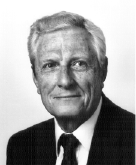KENDRIC C. SMITH'S HOME PAGE
![]()

40 YEARS IN ACADEMIA
- HOME PAGE
- CURRICULUM VITAE
- SCIENTIFIC
COMMUNITY SERVICE - BIBLIOGRAPHY
- RESEARCH HIGHLIGHTS
- SCIENTIFIC HISTORY
IN RETIREMENT:
A COMPUTER NERD and BIRDER
SCIENTIFIC COMMUNITY SERVICE
1. Recognized the problem, sought funding, organized, chaired and edited the report of the first meeting on the effects of increased intensities of solar ultraviolet radiation on the earth. This was even before the days of concern over the chloro-fluorocarbons. The first concern for destroying the ozone layer was the exhaust emissions from supersonic transports (SSTs). This meeting was held in 1971, and was under the auspices of the U.S. National Academy of Sciences. This report was used as the model for future meetings on the ozone problem.
2. I was the second Executive Editor of the International Journal, Photochemistry and Photobiology. The previous Editor took the position that if a paper came from a "good" laboratory, it should be published with little or no reviewing. If it turned out to be a bad paper it would soon fall in disfavor and be ignored. I took violent exception to this philosophy, and had stopped publishing in this Journal because my papers were being accepted without being reviewed. While my papers always had a thorough "in house" review before submission, I wanted some outside input as well. Also, I felt that publishing unreviewed papers was very unfair to graduate students and to scientists in allied fields who were not qualified to judge the quality of the papers. I put a stop to this practice, but bent the noses out of joint of a few heads of "good" laboratories in doing so, i.e., some of their papers were rejected. Even though I insisted on thorough reviewing, I tried not to make this a means of only selecting papers that fit the current dogma. I didn't want the reviewing process to stifle new ideas.The second major philosophy of mine was that it was the job of editors to help authors publish the best papers possible. We looked at papers to find what was good in a paper, not just what was bad, as is the emphasis today. We then tried to make suggestions for improving the papers even further. After all, if a paper is poorly organized and presented, it won't be read, and if it isn't read, then the research might as well not have been done.
3. Although many other countries had national photobiology groups, the U.S. did not. In 1962, I started the Northern California Photobiology and Photochemistry Group. In 1970 I started the Photochemistry and Photobiology Group of the Biophysical Society. In 1972 I founded the American Society for Photobiology (ASP), and served as its President for two years. In 1971 many people in the U.S. said that photobiology was a "non-field". I think that the current viability of ASP has shown them to be wrong.
4. I served on the U.S. National Committee on Photobiology of the National Research Council, National Academy of Sciences for a number of years. This Committee was the U.S. Section of the International Association of Photobiology (AIP). It was while I was Chairman of this Committee that I orchestrated the establishment of the American Society for Photobiology.
5. I was appointed as the ASP representative to the American Institute of Biological Sciences (AIBS). AIBS is an umbrella organization for a number societies in the biological sciences, and speaks at the national level for its member societies. I unfortunately was elected President of AIBS at a time (1983) when it was just about to die because of a lack of funds and of institutional memory, the presence of an incompetent administrative staff, and a string of officers who had not fulfilled their responsibilities to the society. The first thing that I did was to force a vote by the Executive Committee as to whether to disband the society or, if they were willing to work hard, to rebuild it. They voted to rebuild it. Resolving the problems at AIBS was probably the most traumatic experience of my life, and was the beginning of my white hair. Fortunately, I was successful in my efforts to save AIBS.
6. The Digital Photobiology Compendium (DPC) was initiated in 2000, as an online textbook on Photobiology. In 2004, there were 12 completed basic modules on the major areas of photobiology, and 8 modules as historical vignettes. Unfortunately, various circumstances prevented the DPC project from reaching maturity.
In 2007, I salvaged the files, and modified the archaic HTML code so that the files could be viewed on current computers. I renamed the project Photobiological Sciences Online (PSO). As Editor and Webmaster, I then started the long process of obtaining revisions of the old modules, and of seeking new modules. As of May 2013, there were 93 modules, with many new modules "In Preparation".
Photobiological Sciences Online has proved to be a very useful service to the Science of Photobiology. It is now associated with The American Society for Photobiology. I get e-mails of thanks from all over the world.